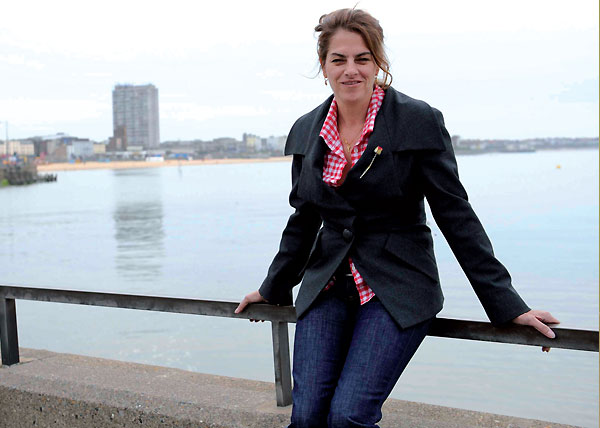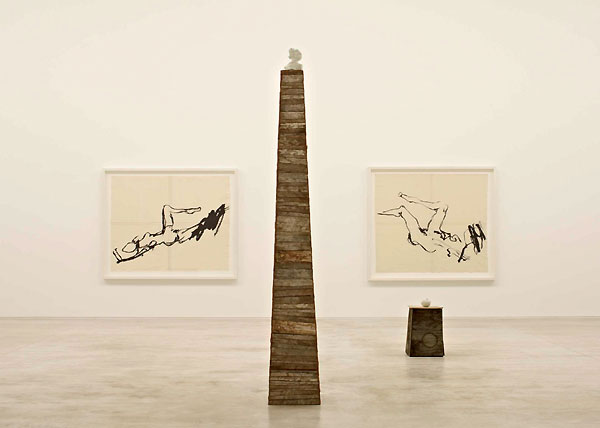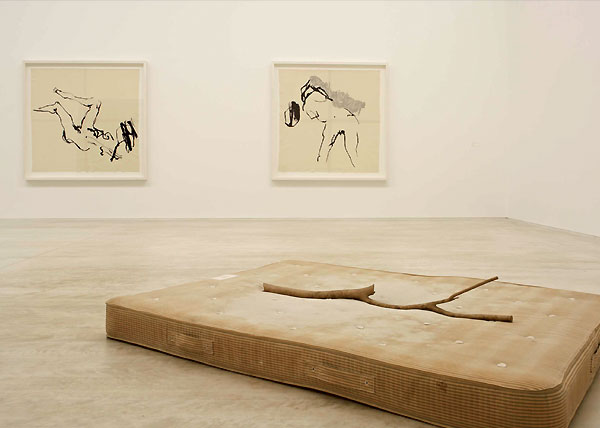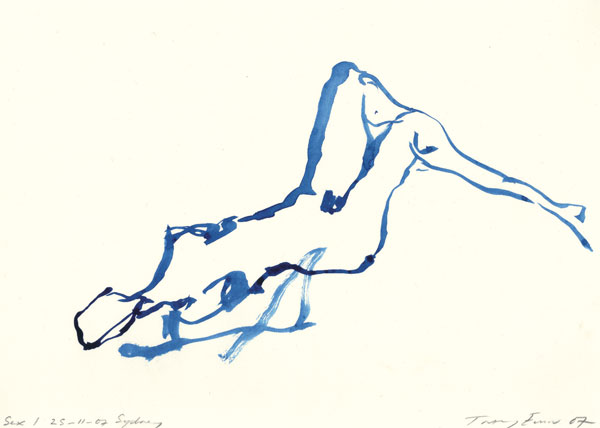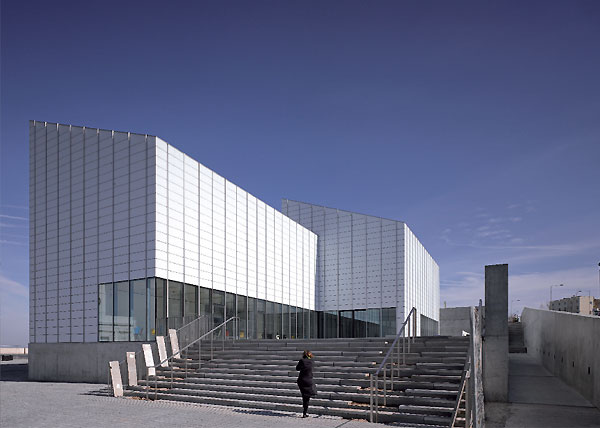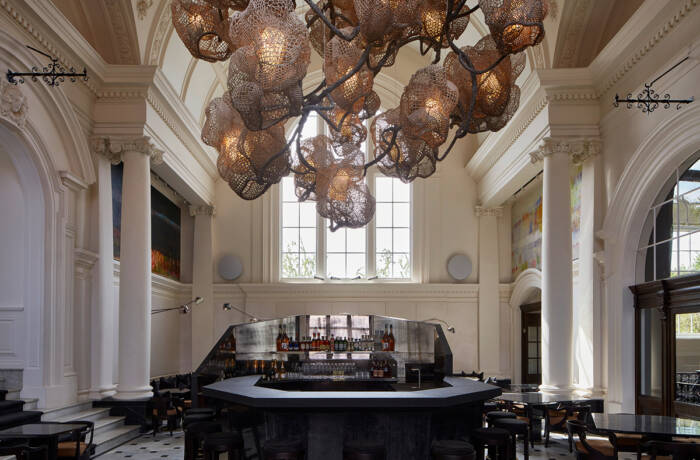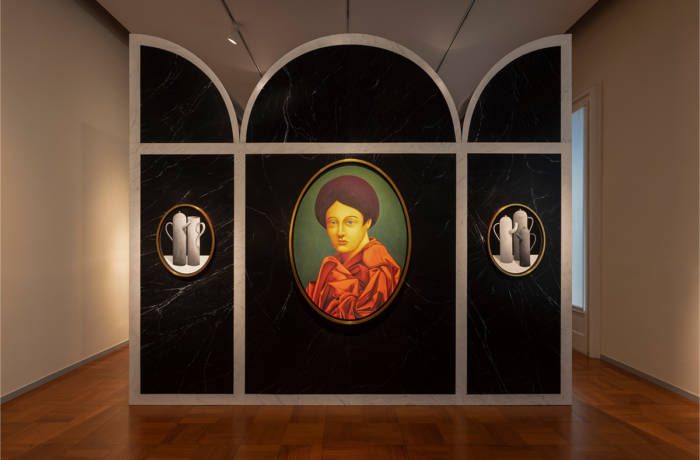Tracy Emin, the wildest young British artist to have shot to fame after the Royal Academy’s Seminal Sensation exhibition 15 years ago, has calmed down and gone home to the seaside town of Margate. Or has she? Caroline Davies caught up with her at the Turner Contemporary
On an icy bright British day, a column of deliberately scruffy DFLs – that’s local shorthand for Down From Londoners – marches deliberately out of Margate station along the grey promenade of this faded English seaside resort. It snakes past the empty, half lit amusement arcades, the shell sculpture decorated tea shops, the tanning salons, the bucket and spades and the few Margate locals on the street at midmorning who turn to give each other a knowing glance. The DFLs are not interested in the superannuated charms of Margate: they are heading towards the angular cement modern building sitting on the edge of the sea wall, The Turner Contemporary, to see the works of Britain’s most famous female artistic talent. They are here to see Tracey Emin.
Emin is waiting in the gallery on the day I visit. Although this is a return to her hometown, in many ways, Emin never really left here. Works inspired by the town pepper her shows and anecdotes about her upbringing slot their way into almost every interview to explain her pieces, her behaviour.
“You can take the girl out of Margate,” Emin once remarked with her infamous grin. “But you can’t take Margate out of the girl.”
When The Turner Contemporary first opened in April 2011, Emin was one of the first on the scene, visibly emotional as she took a turn around the cavernous space, a trail of press at her heels.
“I never imagined such a beautiful building, an art gallery where I grew up,” Emin said at the time. “Margate’s lost 20 years, it’s been quite run down, but I think this will make a big difference. It’s fantastic, it’s beautiful.” Emin’s arrival on the day I visit for the opening of her exhibition ‘She Lay Down Deep Beneath the Sea’ is greeted with a gentle hush and rapid cannon of turning heads. She needs no announcement; she has everyone’s silent attention. “Welcome to Margate,” she beams. There is something of a swagger about Emin; her confident stride and her asymmetrical smile are surprisingly recognisable. Her voice is light and high, and speaking to Emin, you first are struck by her directness. She knows what she is saying and why she is here. And it isn’t only about the art.
“This is a shift in my work,” she says, looking confident if a little self conscious. “Something has happened in the last year because I am nearly 50. I am looking at art in a new way and trying to understand what it is that made me an artist, what it is that I love about art.”
The show features several images of beds, the first a series of blue painted images of Emin’s bed, her window and her chest of drawers and later a cast bronze branch lying in the centre of a stained mattress. The mattress was Emin’s, put in her studio after three years of use, the stains made without conscious effort.
“I’m not going to go into the gory details. Believe me, it was all naturally made,” Emin says. “It wasn’t all on my own, I can assure you. It goes back to that thing of being over. It’s over. This explains it very well. It was there, but it’s gone.”
Emin is particularly clear on this point, stern even.
“The girl is gone, she’s never coming back,” she says adamantly and perhaps a little proactively.
Emin has the habit of speaking quickly and determinedly, particularly when discussing her work. It is as though she is worried someone will criticise her before she is finished, interrupting her explanation. However, as soon as the topic of Margate springs up, Emin’s tone softens.
“You’re seeing Margate at its absolute best,” she says, smiling. “Maybe not at it’s most romantic. It’s most romantic when you have thirty foot waves crashing over the sea wall. That’s quite something.”
“That is why Turner loved being here, not just for the beautiful sunsets, but for the storms and the craziness. I always say to people who want to visit the UK, don’t go to Brighton, go to Margate, it’s really dirty. It has a real edge to it.”
Her passion for her home town seems inalienably twisted with a sense of responsibility.
“I’m always anxious with a show, but more so with thisone,” she says. “I’ve been tearing myself to pieces.”
“After my Hayward show last year I thought ‘there’s no way I can do some sort of retrospective or survey show, I have to do something completely new’ for two reasons,” she says. “One I owe it to Margate for all that Margate has given me and the other reason is 92,000 people went to see my show at the Hayward. On days like this, I want the beach to be full, I want people swimming. I want Margate to be celebrated again.”
For Emin is an artist perhaps as misconstrued as her home town. She became a household name after the installation ‘Every Man I Have Ever Slept With’ was shown at the Royal Academy’s Sensation exhibition in the summer of 1997; yet she is a sublime draughtswoman, as any examination of her drawings will reveal. An old-fashioned artist at heart, from an old-fashioned seaside town?
“There is a possibility that with this show and with this gallery more people will come to visit than ever. Art can change things. There is a lot riding on it, not just for me but for what art can do. I don’t mean it in an ego way, I could be anyone sitting here saying that, but it is an effect that art can have and it should be positive.”
Emin’s exhibition lasted only through the summer; so is one of Britain’s truly gritty seaside towns worth a visit? “Even if people don’t like my work I still think they should use it as an excuse to come down,” says the artist with her off-centre, tight-lipped grin. “Even if you come down and slag me off, I don’t care, just come.”

